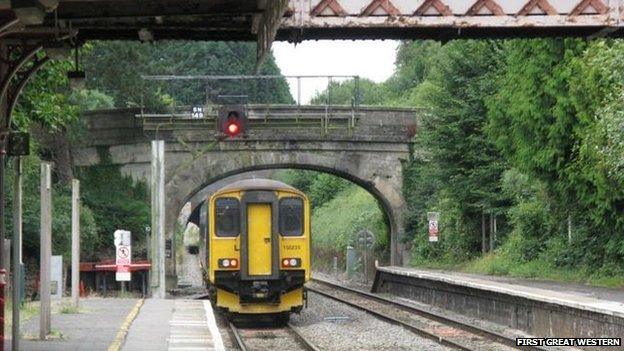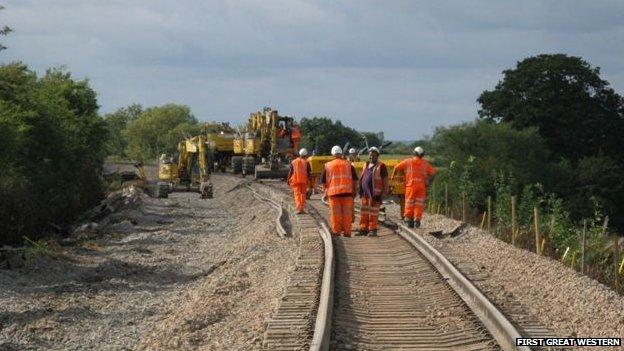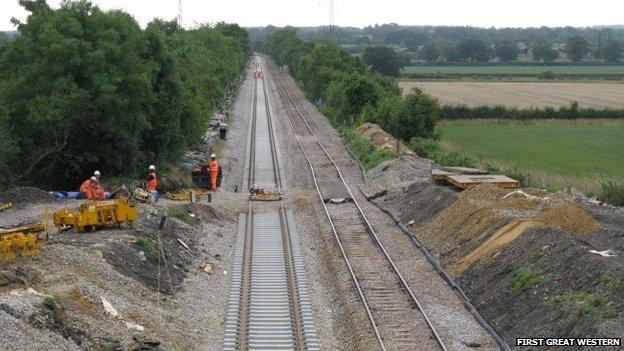Bus service replaces Kemble to Gloucester trains as new signals tested
- Published

The weekend closure of the Gloucester to Kemble line is necessary so engineers can check the new signals will work correctly with the existing railway infrastructure

Despite damage to the track caused by a derailed engineering train, project managers are confident the work will be completed on time

The track between Kemble and Swindon was made single track in the late 1960s as a cost-saving measure by British Rail, under agreement with the government
Final testing will take place on signalling equipment at the weekend as part of a £45m project to upgrade the railway between Kemble and Swindon.
A bus service has been in operation between the two stations but this will extend to the Kemble to Gloucester section during the work.
Network Rail said this was necessary to check the new signals worked with the existing infrastructure.
A spokesman said he was "confident" of the the line reopening by Monday
Railway operator First Great Western (FGW) said replacement bus services would operate between Swindon and Gloucester/Cheltenham Spa over the weekend.
Earlier this month an engineering train derailed causing damage to the track between Minety and Swindon which threatened to delay the project.
'Quietly confident'
Network Rail said the problems had been solved and "everything was going to plan [with] the work due to be completed on schedule".
"The installation of the new signals has an impact beyond the immediate area and that is why we are having to close the Kemble to Gloucester route.
"I'm quietly confident it will all be open on Monday," he added.
The overall project is expected to be completed by Easter 2014 and it is hoped it will reduce passenger delays and improve train reliability.
The upgrade of the route between Kemble and Swindon to a two-track operation is part of a £45m project ahead of the Great Western Main Line's electrification.
The line was "singled" in the late 1960s as a cost-saving measure by British Rail, under agreement with the government.
Adding the second track is expected to allow up to four trains per hour to travel on the line in each direction.
- Published21 August 2013
- Published10 August 2013
- Published25 July 2013
- Published11 January 2013
- Published26 November 2012